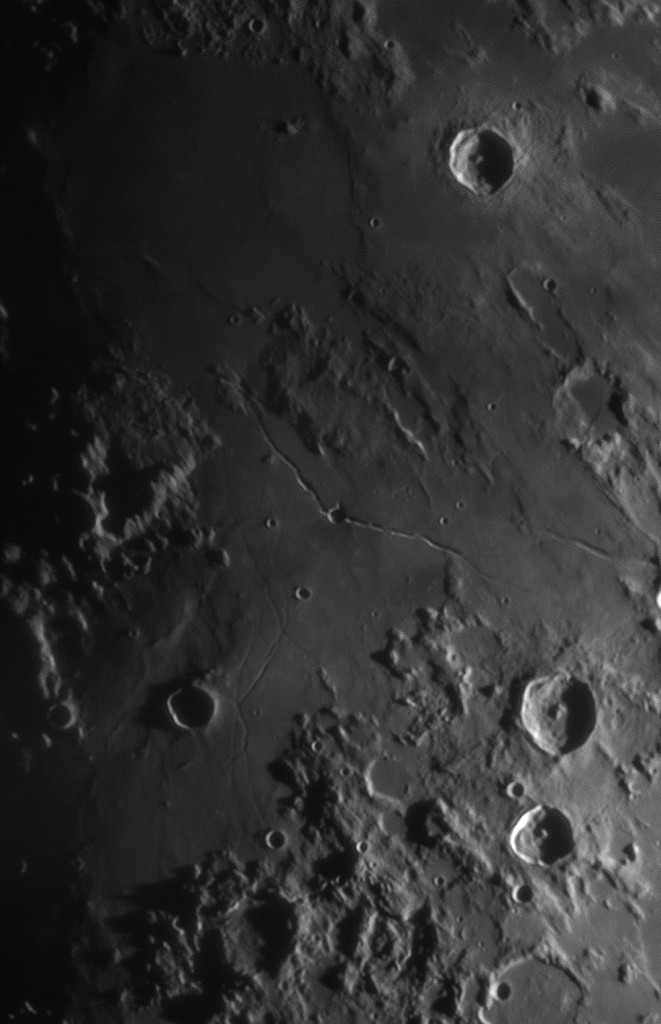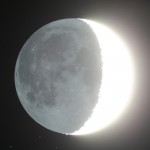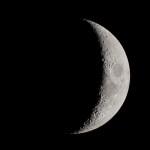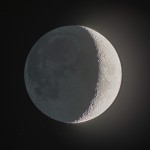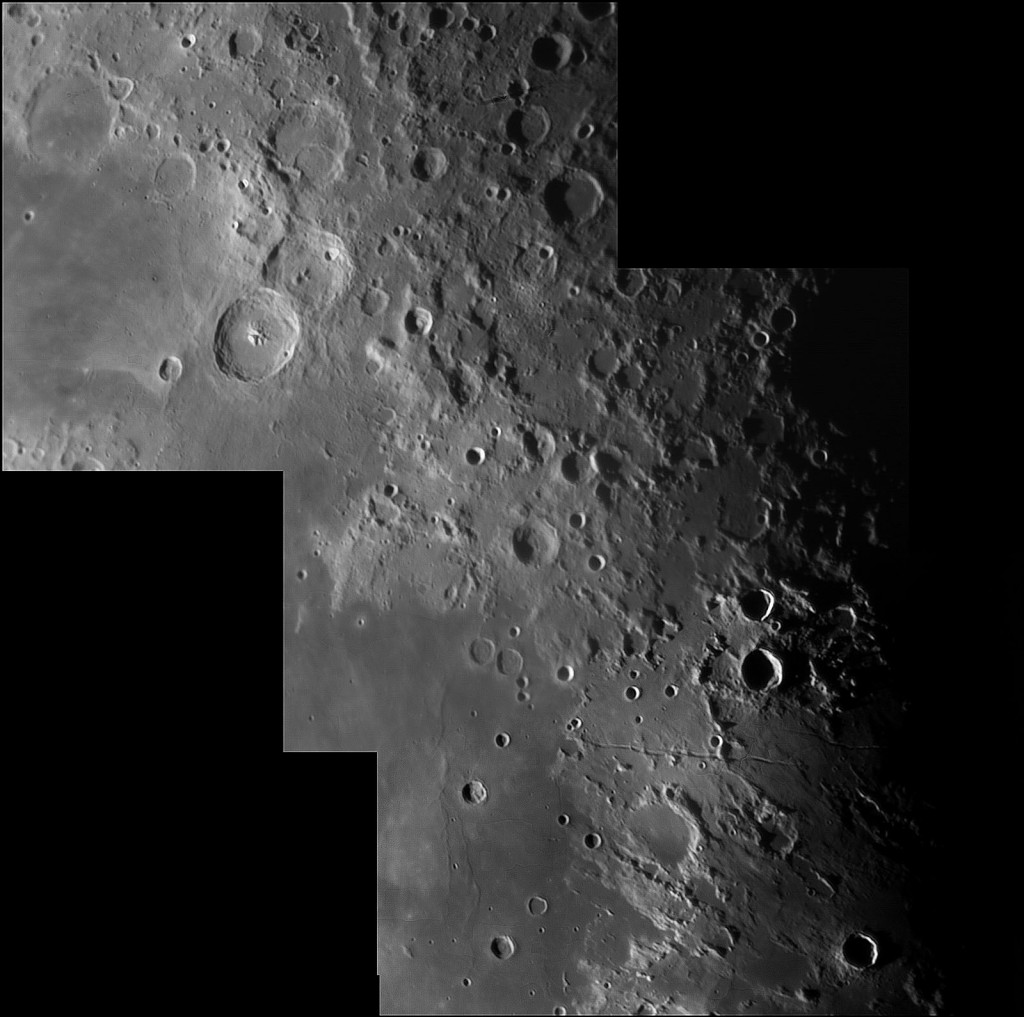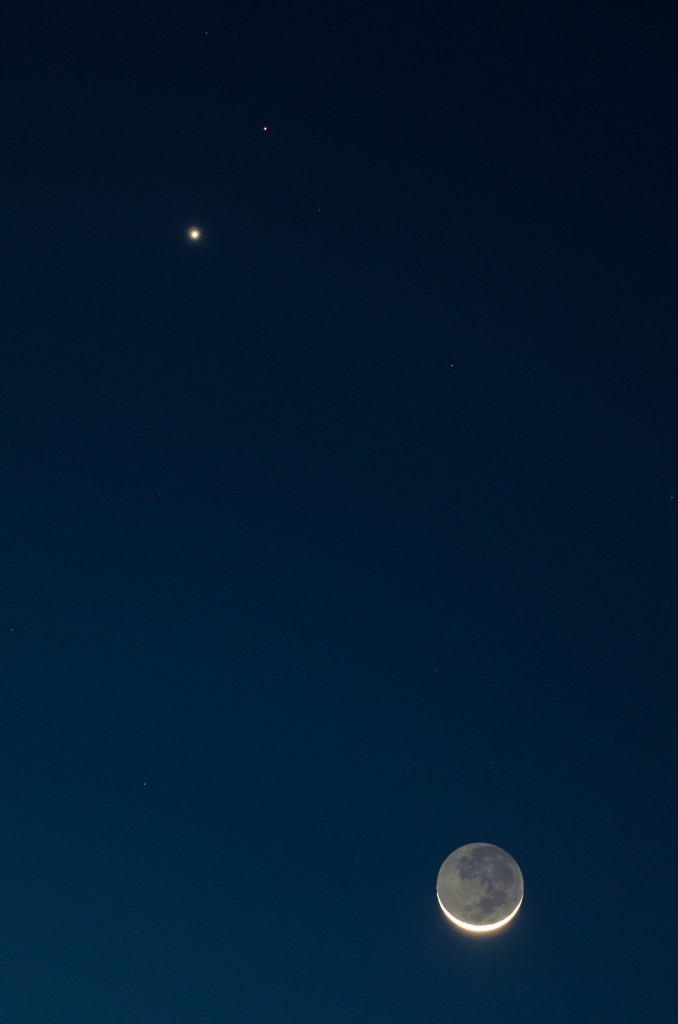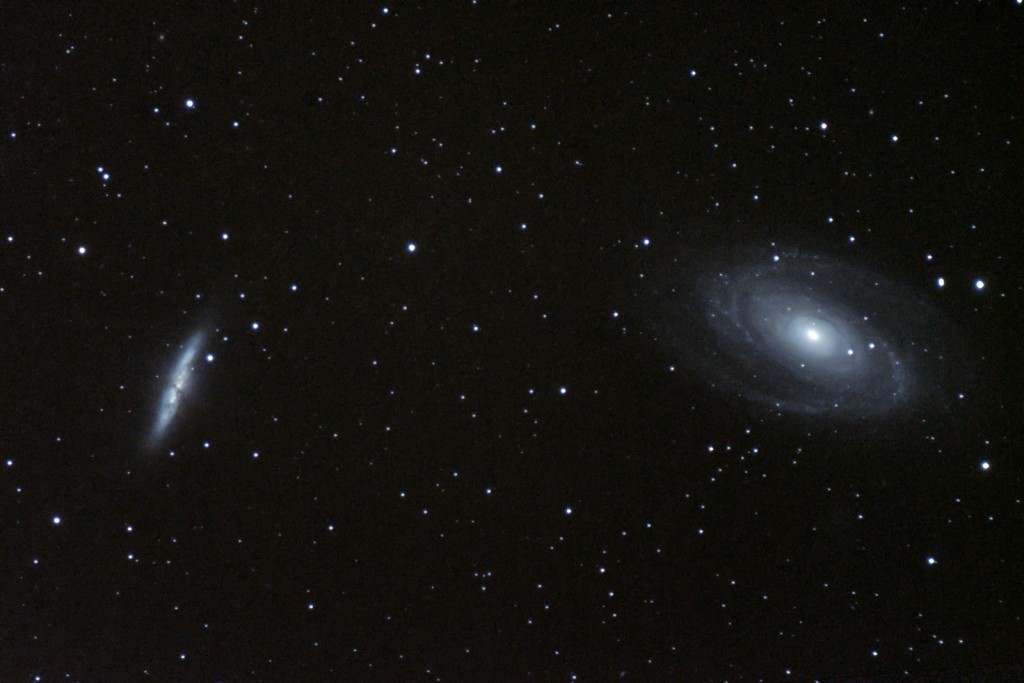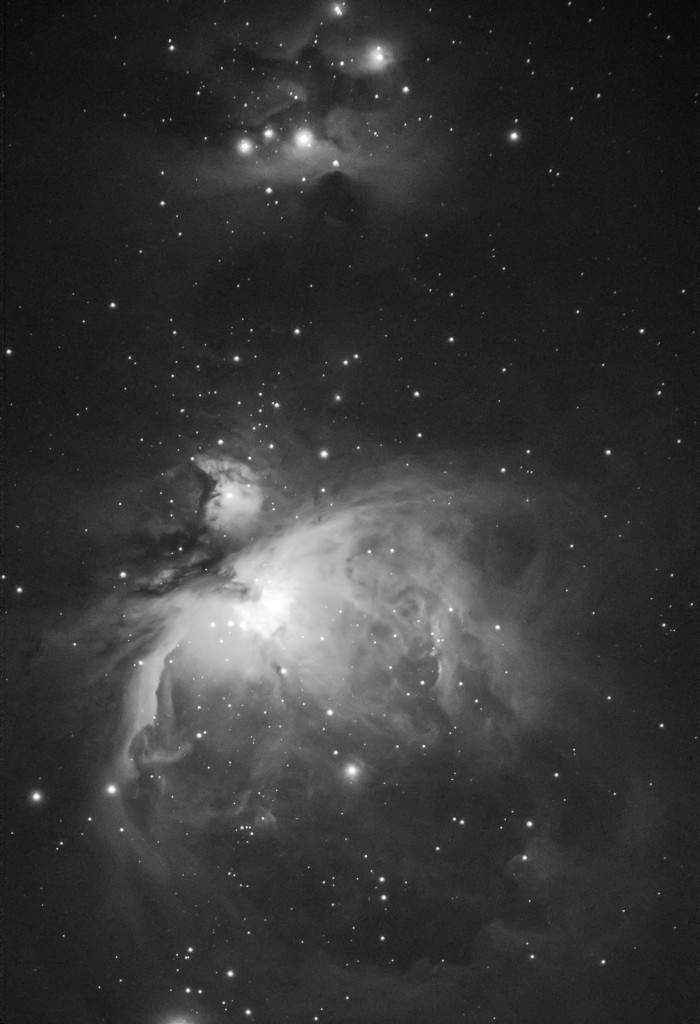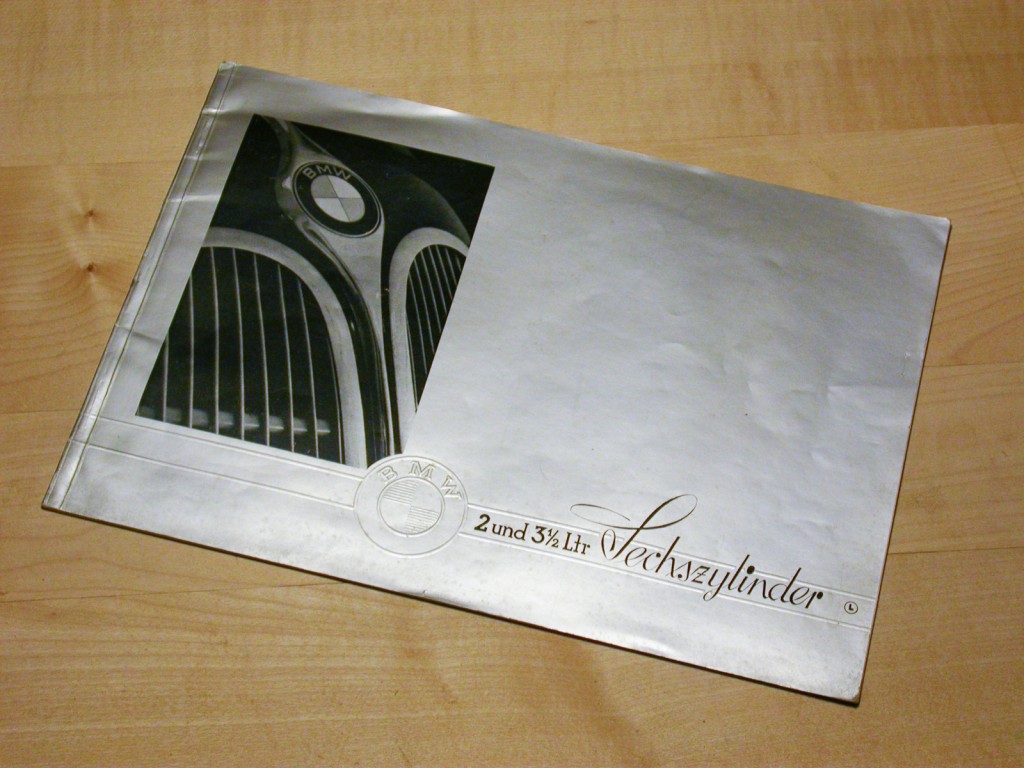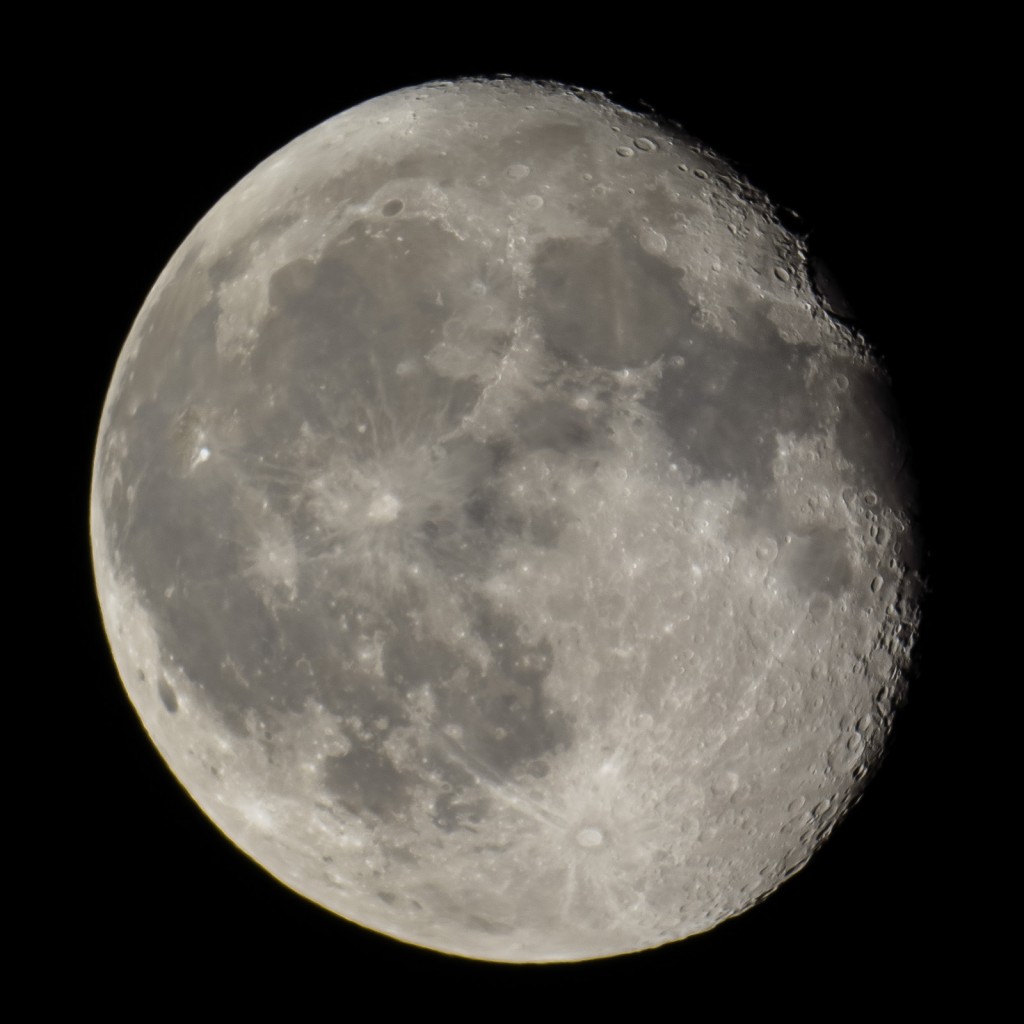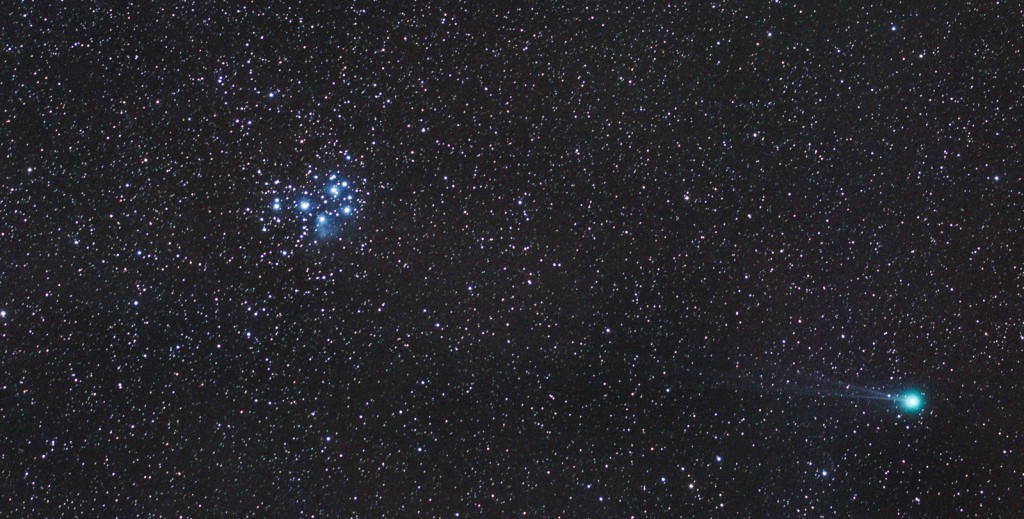Author Archives: philipp
The Bright and Dark side of the moon
On March, 24th the young moon was visible in the western sky. The clear air provided a good opportunity to capture the dark side of the moon which is actually illuminated by the earth which is big and bright in the lunar sky.
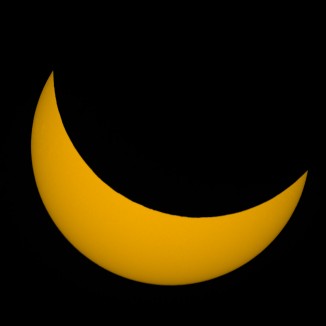
Partial Solar Eclipse – 20.3.2015
While travelling to the Faroe islands or to Svalbard was out of the question, I was able to take a day off for the solar eclipse of March 20th 2015.
The Vorarlberger Amateur Astronomen (VAA) organized an eclipse observation in cooperation with the Pfänder-Bahn at the summit of the Pfänder mountain above Bregenz. Thanks to Kurt Gattnar, who managed the organization from the VAA side, we had a very enjoyable experience. Even carts for our equipment were available! Read More
Lunar Terminator 2015-02-25
The moon is always a very regarding target. Even though the slow frame rate of the QHY5 (3FPS!) and the missing IR-Cut Filter do degrade the quality of the final image, some nice detail is visible in this mosaic of three individual avi files. 100 frames out of 400 were used for every frame.
The trio of Theophilus, Cyrillus und Catharina craters at upper left and the Ariadaeus Rille at lower right are prominent features visible in this image. On the floor of the Mare tranquillitatis at lower left some subtle mare ridges are vsible.
Moon, Venus and Mars
Tonight the western horizon is dazzlingly beautiful as the Moon, Venus and Mars shine brillantly in the clear air near the horizon.
M81, M82 and Jupiter
At first I had to wait for about two hours until the floodlights on the adjacent soccer field were turned off, then I had trouble locating the galaxies as the 6×30 finder is not really adequate in a light polluted sky, then came problems with the connection from BackyardNikon to the camera, and when everything was set up correctly, the guiding was not working properly, resulting in trailed images… so quite a lot of effort went into this picture, but of course a lot has been learned.
M42 & Lovejoy
At last the sky was reasonably clear to try out my new toy. In fact the Astro-Physics 127mm f/8 refractor is not exactly new, as it was manufactured in 1989, so I was even more curious as how it would perform.
The Super Polaris mount is definitely overwhelmed with the weight of the big, long refractor, but on a windstill evening it works tolerably well. As this was basically a test, and I didn’t want to make matters even more complicated, I didn’t use any autoguiding, and therefore limited the individual exposure times to 30s. I had to throw away about half of the epxosures due to tracking errors, but 14 exposures looked good enough to use. Transparency was pretty bad, a slight haze due to the freezing cold air and smoke from wood-powered heating combined with the light pollution of the rhine valley made the sky very bright. In the color version, the sky looks quite murky, I like the black and white rendition better:
antique BMW Folder (1939)
BMW Six-Cylinder Folder 1939
Here are some pages from an old BMW folder I own, it is titled: “2 und 3 1/2 Ltr Sechszylinder”. The folder was printed in 1939
The Moon 2015-02-06
Comet C/2014 Q2 Lovejoy
Another bright Comet Lovejoy with the designation C/2014 Q2 Lovejoy is grazing our skies these days.
The comet’s path takes it north next to the constellation of Orion, making it conveniently placed for nothern hemisphere observers.
18.1.2015
Yesterday’s sky was a bit hazy as the temperature dropped quickly and humidity condensed in the air, additionally light pollution creates a bad gradient in the west of my home.
